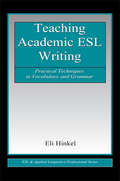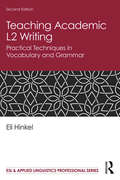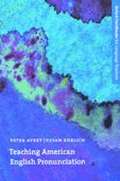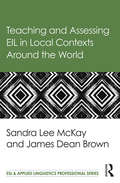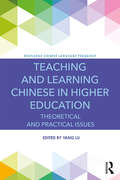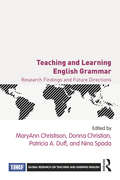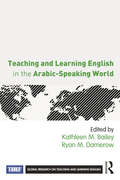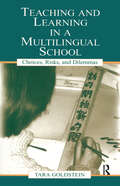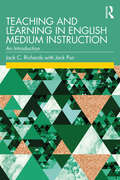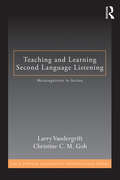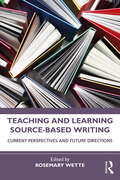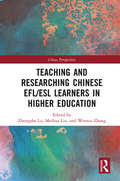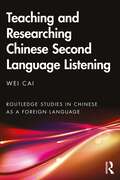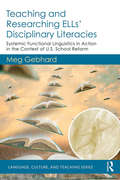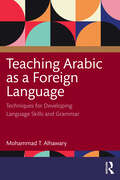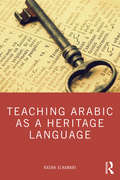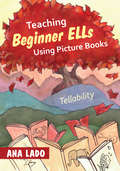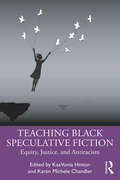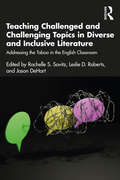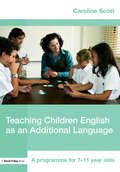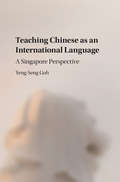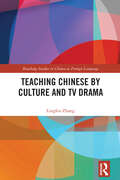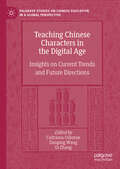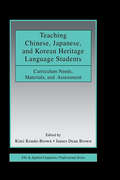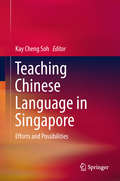- Table View
- List View
Teaching Academic ESL Writing: Practical Techniques in Vocabulary and Grammar (ESL & Applied Linguistics Professional Series)
by Eli HinkelTeaching Academic ESL Writing: Practical Techniques in Vocabulary and Grammar fills an important gap in teacher professional preparation by focusing on the grammatical and lexical features that are essential for all ESL writing teachers and student-writers to know. The fundamental assumption is that before students of English for academic purposes can begin to successfully produce academic writing, they must have the foundations of language in place--the language tools (grammar and vocabulary) they need to build a text. This text offers a compendium of techniques for teaching writing, grammar, and lexis to second-language learners that will help teachers effectively target specific problem areas of students' writing. Based on the findings of current research, including a large-scale study of close to 1,500 non-native speakers' essays, this book works with several sets of simple rules that collectively can make a noticeable and important difference in the quality of ESL students' writing. The teaching strategies and techniques are based on a highly practical principle for efficiently and successfully maximizing learners' language gains. Part I provides the background for the text and a sample of course curriculum guidelines to meet the learning needs of second-language teachers of writing and second-language writers. Parts II and III include the key elements of classroom teaching: what to teach and why, possible ways to teach the material in the classroom, common errors found in student prose and ways to teach students to avoid them, teaching activities and suggestions, and questions for discussion in a teacher-training course. Appendices to chapters provide supplementary word and phrase lists, collocations, sentence chunks, and diagrams that teachers can use as needed. The book is designed as a text for courses that prepare teachers to work with post-secondary EAP students and as a professional resource for teachers of students in EAP courses.
Teaching Academic L2 Writing: Practical Techniques in Vocabulary and Grammar (ESL & Applied Linguistics Professional Series)
by Eli HinkelThe new edition of this comprehensive text fills an important role in teacher professional preparation by focusing on how to teach the grammar and vocabulary that are essential for all L2 writing teachers and student-writers. Before L2 writers can begin to successfully produce academic prose, they need to understand the foundations of the language and develop the language tools that will help them build reasonable quality text. Targeting specific problem areas of students’ writing, this text offers a wealth of techniques for teaching writing, grammar, and vocabulary to second-language learners. Updated with current research and recent corpus analysis findings, the second edition features a wealth of new materials, including new teaching activities; student exercises and assignments; and substantially revised appendices with supplementary word and phrase lists and sentence components. Designed for preservice ESL/ELT/TESOL courses as well as Academic Writing and Applied Linguistics courses, this book includes new, contextualized examples in a more accessible and easy-to-digest format.
Teaching American English Pronunciation
by Peter Avery Susan EhrlichUnlike books aimed at linguistics students or individual learners of English, Teaching American English Pronunciation specifically addresses the needs of ESL teachers. It provides the descriptive knowledge needed to teach pronunciation effectively. But it is also full of practical teaching ideas. The book is divided into three main parts: - Part One is an introduction to the English sound system. It covers spelling and pronunciation, the individual sounds of English, English sounds in context, the shape of English words, word stress and vowel reduction, and connected speech. Throughout this part of the book, the authors use examples of typical errors made by ESL students to illustrate the descriptions and concepts they describe. - Part Two describes the pronunciation problems that most ESL students have with English vowels, consonants, stress, rhythm, and intonation. It then goes on to look at the specific pronunciation problems of speakers of fifteen different languages: Arabic, Chinese, Farsi, French, German, Greek, Hindi and Punjabi, Italian, Japanese, Korean, Polish, Portuguese, Spanish, and Vietnamese. - Part Three consists of a set of articles about practical issues in pronunciation teaching. These are written by ten North American teachers and language researchers with a wide range of experience of teaching in many different contexts. The topics covered include: pronunciation syllabus design, pronunciation-based listening activities, developing self-correcting and self-monitoring strategies, and drama techniques in the pronunciation class.
Teaching and Assessing EIL in Local Contexts Around the World (ESL & Applied Linguistics Professional Series)
by Sandra Lee Mckay James Dean BrownEnglish today is a global language embedded in a great variety of social contexts, resulting in linguistic and pedagogical variation. Taking a new look at the teaching and assessing of English as an international language (EIL), this text highlights overarching principles and provides specific strategies for responding to questions and challenges posed by the changing demographics of English language learners and users around the world. Teaching and Assessment in EIL Classrooms introduces an original, coherent framework in which needs analysis, pedagogical principles, and assessment are integrated describes variables that influence effective teaching and assessment and the characteristics of various EIL teachers and learners emphasizes that pedagogical and assessment decisions need to be based on the learning and teaching needs of each specific EIL context includes specific principles and strategies for teaching and assessing grammar, oral language, and literacy skills in EIL classrooms provides strategies for integrating computer-mediated language into EIL classrooms in ways that promote cross-cultural awareness, language development, and individualized learning Timely, accessible, and practical, this text for graduate and pre- and in-service courses on language teaching and assessment is at the forefront in providing valuable information and guidance for enabling principled and context-sensitive praxis in EIL classrooms worldwide.
Teaching and Learning Chinese in Higher Education: Theoretical and Practical Issues (Routledge Chinese Language Pedagogy)
by Yang LuTeaching and Learning Chinese in Higher Education deals with the current issues and challenges faced by teachers and learners of Chinese. Written by leading professionals and academics, the book is the first collection of research articles based on data collected in higher education institutions in the UK. The studies focus on concerns related to learners of Chinese as a foreign language (CFL) and aim to establish studies on teaching Chinese as a foreign language (TCFL) as part of the mainstream of applied linguistics The contributors have applied their theoretical backgrounds in applied linguistics and education to tackle issues such as how to benchmark the Chinese written language with CEFR, how to integrate standardised Chinese proficiency tests with institutional assessments and teaching methodologies. Teaching and Learning Chinese in Higher Education will be invaluable to professionals, academics and students seeking theoretical frameworks in applied linguistics for TCFL.
Teaching and Learning English Grammar: Research Findings and Future Directions (Global Research on Teaching and Learning English)
by Nina Spada Donna Christian Patricia A. Duff MaryAnn ChristisonAn important contribution to the emerging body of research-based knowledge about English grammar, this volume presents empirical studies along with syntheses and overviews of previous and ongoing work on the teaching and learning of grammar for learners of English as a second/foreign language. It explores a variety of approaches, including form-focused instruction, content and language integration, corpus-based lexicogrammatical approaches, and social perspectives on grammar instruction. Nine chapter authors are Priority Research Grant or Doctoral Dissertation Grant awardees from The International Research Foundation for English Language Education (TIRF), and four overview chapters are written by well-known experts in English language education. Each research chapter addresses issues that motivated the research, the context of the research, data collection and analysis, findings and discussion, and implications for practice, policy, and future research. The TIRF-sponsored research was made possible by a generous gift from Betty Azar. This book honors her contributions to the field and recognizes her generosity in collaborating with TIRF to support research on English grammar. Teaching and Learning English Grammar is the second volume in the Global Research on Teaching and Learning English Series, co-published by Routledge and TIRF.
Teaching and Learning English in the Arabic-Speaking World: Teaching And Learning English In The Arabic-speaking World (Global Research on Teaching and Learning English)
by Kathleen M. Bailey Ryan M. DamerowCo-published with The International Research Foundation for English Language Education (TIRF) An important contribution to the emerging body of research-based knowledge about teaching English to native speakers of Arabic, this volume presents empirical studies carried out in Egypt, Lebanon, Oman, Palestine, Saudi Arabia, and the United Arab Emirates (UAE)—a region which has gained notable attention in the past few decades. Each chapter addresses an issue of current concern, and each includes implications for policy, practice, and future research. Nine chapter authors are Sheikh Nahayan Fellows—recipients of doctoral fellowships from The International Research Foundation for English Language Education (TIRF). This volume is the first in the Global Research on Teaching and Learning English Series, co-published by Routledge and TIRF.
Teaching and Learning in a Multilingual School: Choices, Risks, and Dilemmas (Language, Culture, and Teaching Series)
by Gordon Pon Tara Goldstein Timothy Chiu Judith NganTeaching and Learning in a Multilingual School: Choices, Risks, and Dilemmas is for teachers and teacher educators working in communities that educate children who do not speak English as a first language. At the center of the book are findings from a four-year critical ethnographic case study of a Canadian high school with a large number of emigrant students from Hong Kong and rich descriptions of the multitude of ways teachers and students thought about, responded to, and negotiated the issues and dilemmas that arose. The solutions and insights they derived from their experiences of working across linguistic, cultural, and racial differences will be extremely valuable to educators in other locales that have become home to large numbers of immigrant families. The book is designed to help readers think about how the issues and dilemmas in the case study manifest themselves in their own communities and how to apply the insights they gain to their own teaching and learning contexts: * Each chapter includes four components: an excerpt from the ethnographic study; an analytic commentary on the ethnographic text drawn from a variety of theoretical perspectives and academic disciplines (including interactionist sociolinguistics, language minority education, English as a Second Language education, critical literacy, anti-racist education, and critical teacher education); a pedagogical discussion; and suggestions for further reflection and discussion. * The book features the use of ethnographic play writing to engage readers with the issues that arise in multicultural/multilingual schools. The author's play Hong Kong, Canada is included in its entirety and is used to stimulate further discussion of the issues raised in each of the chapters. * Although it is organized around two different kinds of schooling dilemmas--dilemmas of speech and silence, and dilemmas of discrimination--everyday dilemmas of curriculum and assessment are also discussed throughout the book. * A methodological discussion of the choices the author made while designing, conducting, and writing up the critical ethnographic case study makes the book useful in qualitative research methodology courses. * A set of strategies and activities is provided for helping students develop English oral presentation skills.
Teaching and Learning in English Medium Instruction: An Introduction
by Jack C. Richards Jack PunTeaching and Learning in English Medium Instruction provides an overview of the nature of English Medium Instruction (EMI) in both secondary and tertiary education. The book explores the nature of academic literacy in EMI the ways in which EMI is implemented in different contexts issues related to teaching and learning through the medium of English teaching challenges and coping strategies used by EMI teachers support for EMI through EAP the professional development needs of EMI teachers approaches to the evaluation of EMI programs. The book contains a number of short chapters written in an accessible style with discussion questions and practical follow-up tasks. Throughout the book, key theory and research serve to introduce the core issues involved in EMI, which are then explored in terms of implications for practice. The book can be used in workshops and courses and for groups that include EMI teachers of content subjects, EAP teachers, TESOL students, and teachers and education officials involved with the implementation of EMI in different contexts. With the expansion of EMI worldwide in recent years the book seeks to introduce EMI to a new generation of EMI teachers and language teaching professionals.
Teaching and Learning Second Language Listening: Metacognition in Action (ESL & Applied Linguistics Professional Series)
by Larry Vandergrift Christine C.M. GohThis reader-friendly text, firmly grounded in listening theories and supported by recent research findings, offers a comprehensive treatment of concepts and knowledge related to teaching second language (L2) listening, with a particular emphasis on metacognition. The metacognitive approach, aimed at developing learner listening in a holistic manner, is unique and groundbreaking. The book is focused on the language learner throughout; all theoretical perspectives, research insights, and pedagogical principles in the book are presented and discussed in relation to the learner. The pedagogical model─a combination of the tried-and-tested sequence of listening lessons and activities that show learners how to activate processes of skilled listeners ─ provides teachers with a sound framework for students’ L2 listening development to take place inside and outside the classroom. The text includes many practical ideas for listening tasks that have been used successfully in various language learning contexts.
Teaching and Learning Source-Based Writing: Current Perspectives and Future Directions
by Rosemary WetteThis volume brings together significant findings, approaches, and research-based pedagogies on teaching and learning source-based writing. A comprehensive update to the field, this book presents source-based writing as an essential skill that comes with its own specific set of challenges, requiring a complex set of literacy skills and capabilities for mastery. With contributors from leading scholars from around the world, the volume addresses source-based writing as a developmental issue and offers guidance for supporting novice academic writers on their path toward proficiency and accumulation of multifaceted skill set. Chapters cover key topics, including metacognitive skills, the flipped classroom, scaffolding, assessment, and ethical considerations. With research reviews, practical considerations and future directions as components of each chapter, this book is ideal for courses on academic writing and second language writing.
Teaching and Researching Chinese EFL/ESL Learners in Higher Education (China Perspectives)
by Zhongshe LuChina has attached great importance to teaching students to become proficient users of English. Yet, despite a plethora of studies and practice on Chinese ESL/EFL (English as a second/foreign language) learners, the large student population, its complicated composition and the complex nature of second and foreign language learning have rendered it difficult to offer a panoramic view on ESL/EFL teaching and learning of Chinese learners. This book provides a new and up-to-date perspective on the teaching and learning of Chinese ESL/EFL learners. The book collects 15 case studies, falling into two parts—Curriculum Development and Teaching Practice and Skills-Based Research. The collected studies deploy qualitative, quantitative or mixed methods to explore patterns, features, developments and causes and effects of a variety of issues in the sphere of ESL/EFL teaching and learning. Moreover, the cases offer insights that are relevant beyond the mainland Chinese context such as Hong Kong, Macau, Britain and Australia. Students and scholars of TESOL and applied linguistics will be interested in this title.
Teaching and Researching Chinese Second Language Listening (Routledge Studies in Chinese as a Foreign Language)
by Wei CaiTeaching and Researching Chinese Second Language Listening focuses on Chinese L2 listening with theory and pedagogy at its heart. The objectives of the book are to recount the development of Chinese L2 listening pedagogy, to synthesize research on Chinese L2 listening, and to propose a Chinese L2 listening approach. This book is the first to bridge the gap between Chinese L2 and general L2 listening and develop a much-needed systematic teaching approach to Chinese listening based on research findings in L2 listening, the unique features of the Chinese language, and the distinctive characteristics of the Chinese L2 learner population. This book grounds Chinese L2 teaching in solid theories of L2 acquisition and teaching. The research-informed and evidence-based Chinese L2 teaching approach proposed in the book seeks to move beyond the traditional product-oriented approach to integrate form-, meaning-, process-, and learner-focused listening. This book also discusses Chinese L2 listening from learners’ perspectives: heritage versus non-heritage learners and motivation. These are presented together with theory and teaching practice. The book is aimed at researchers, in-service teachers and students taking upper-level undergraduate courses and postgraduate courses for programs in Chinese applied linguistics and teaching Chinese as a second language (TCSL). Chinese listening studies to date have mostly been published in the Chinese language, which severely limits their readership. This book is therefore written in English to fill the gap in current scholarship. Due to a large number of Chinese learners and the consequential booming programs in TCSL and CIE (Chinese international education), it is important to dedicate a book specifically to Chinese listening.
Teaching and Researching ELLs’ Disciplinary Literacies: Systemic Functional Linguistics in Action in the Context of U.S. School Reform (Language, Culture, and Teaching Series)
by Meg GebhardWritten from a critical perspective, this volume provides teachers, teacher educators, and classroom researchers with a conceptual framework and practical methods for teaching and researching the disciplinary literacy development of English language learners (ELLs). Grounded in a nuanced critique of current social, economic, and political changes shaping public education, Gebhard offers a comprehensive framework for designing curriculum, instruction, and assessments that build on students’ linguistic and cultural resources and that are aligned with high-stakes state and national standards using the tools of systemic functional linguistics (SFL). By providing concrete examples of how teachers have used SFL in their work with students in urban schools, this book provides pre-service and in-service teachers, as well as literacy researchers and policy makers, with new insights into how they can support the disciplinary literacy development of ELLs and the professional practices of their teachers in the context of current school reforms. Key features of this book include the voices of teachers, examples of curriculum, sample analyses of student writing, and guiding questions to support readers in conducting action-oriented research in the schools where they work.
Teaching Arabic as a Foreign Language: Techniques for Developing Language Skills and Grammar
by Mohammad T. AlhawaryTeaching Arabic as a Foreign Language: Techniques for Developing Language Skills and Grammar is an indispensable guide for in-training and novice teachers of Arabic as a foreign language and a source of fresh and effective ideas for experienced teachers. This highly practical guide outlines how Arabic second-language skills (listening, speaking, reading, and writing) and grammar are targeted in isolation from one another and how they are integrated to reinforce each other through the use of specific tried-and-tested techniques and activities. Teaching Arabic as a Foreign Language provides instantly accessible, practical teaching techniques to target and develop specific language skills and grammar at novice, intermediate, and advanced levels.
Teaching Arabic as a Heritage Language
by Rasha ElHawariTeaching Arabic as a Heritage Language is a practical guide to Arabic pedagogy for Heritage Learners of Arabic. Exploring the teaching of Arabic as a foreign language (TAFL) in North America and Europe, it covers sociocultural topics such as diglossia and religion alongside theoretical approaches to Heritage Language Learning. It also provides a new and detailed definition of the heritage language learner (HLL) of Arabic. The role of the professor and the material are explored to ensure a successful learning experience. The latest advances in HLL are considered together with the recent and recommended changes in classroom practice, giving rise to the recognition of the individual needs of heritage learners. This is an indispensable resource for instructors, researchers, and students in the fields of TAFL and TASOL, as well as linguists interested in Arabic language learning and teaching.
Teaching Beginner ELLs Using Picture Books: Tellability
by Ana L. LadoPicture your beginning ELLs reading their way to success! For beginning ELLs, a picture really is worth a thousand words! Picture books are useful tools for building important language and social foundations that students may miss through traditional instruction. Ana Lado provides all the tools you’ll need to engage ELLs of any age with picture books, including how to: Design lessons around picture books Select appropriate titles using specific criteria Incorporate fun and engaging strategies like singing and reenacting Access the book’s searchable online database to find the right book Integrate picture-book learning to facilitate development of English Language Proficiency
Teaching Black Speculative Fiction: Equity, Justice, and Antiracism
by KaaVonia Hinton Karen Michele ChandlerTeaching Black Speculative Fiction: Equity, Justice, and Antiracism edited by KaaVonia Hinton and Karen Michele Chandler offers innovative approaches to teaching Black speculative fiction (e.g., science fiction, fantasy, horror) in ways that will inspire middle and high school students to think, talk, and write about issues of equity, justice, and antiracism. The book highlights texts by seminal authors such as Octavia E. Butler and influential and emerging authors, including Nnedi Okorafor, Kacen Callender, B. B. Alston, Tomi Adeyemi, and Bethany C. Morrow.Each chapter in Teaching Black Speculative Fiction: introduces a Black speculative text and its author, describes how the text engages with issues of equity, justice, and/or antiracism, explains and describes how one theory or approach helps elucidate the key text’s concern with equity, justice, and/or antiracism, and offers engaging teaching activities that encourage students to read the focal text; that facilitate exploration of the text and a theoretical lens or critical approach; and that guide students to consider ways to extend the focus on equity, justice, and/or antiracism to action in their own lives and communities.
Teaching Challenged and Challenging Topics in Diverse and Inclusive Literature: Addressing the Taboo in the English Classroom
by Rachelle S. Savitz Leslie D. Roberts Jason DeHartThis groundbreaking text provides practical, contextualized methods for teaching and discussing topics that are considered "taboo" in the classroom in ways that support students’ lived experiences. In times when teachers are scapegoated for adopting culturally sustaining teaching practices and are pressured to "whitewash" the curriculum, it becomes more challenging to create an environment where students and teachers can have conversations about complex, uncomfortable topics in the classroom. With contributions from scholars and K-12 teachers who have used young adult literature to engage with their students, chapters confront this issue and focus on themes such as multilingualism, culturally responsive teaching, dis/ability, racism, linguicism, and gender identity. Using approaches grounded in socioemotional learning, trauma-informed practices, and historical and racial literacy, this text explores the ways in which books with complicated themes can interact positively with students’ own lives and perspectives. Ideal for courses on ELA and literature instruction, this book provides a fresh set of perspectives and methods for approaching and engaging with difficult topics. As young adult literature that addresses difficult subjects is more liable to be considered "controversial" to teach, teachers will benefit from the additional guidance this volume provides, so that they can effectively reach the very students these themes address.
Teaching Children English as an Additional Language: A Programme for 7-12 Year Olds
by Caroline ScottHere is a typical classroom scenario: out of the thirty children, two-thirds speak a different language at home and only speak English at school. Even though many pupils’ English skills are almost non-existent, teachers are expected to provide the national curriculum for every child in the class. Teaching Children English as an Additional Language solves this problem with a ten-week teaching programme of units and lesson activities for children aged seven–eleven (Key Stage 2) new to English. It will help these children learn some very basic English sentences, questions and vocabulary, to get them through regular day-to-day routines more easily. By offering a flexible step by step approach this book helps EAL teachers to: identify learners’ individual needs teach grammar and vocabulary support teaching through speaking and listening assess pupils to inform future planning The programme also contains emergency lessons to support learners in the first three days, cross curricular links, ways of using a home-school learning book and an opportunity for the child to make a booklet about themselves. It fosters the child’s home language, incorporates different learning styles as well as including a wealth of carefully tailored, themed resources. The programme is complete with activities, resources and assessment materials and helpful tips on how to develop a successful EAL department.
Teaching Chinese as an International Language: A Singapore Perspective
by Goh Yeng-SengBilingual and bicultural scholar Yeng-Seng Goh offers the first in-depth English language analysis of global Chinese, exploring the spread of Chinese beyond China and its emergence as a global language. Approaching the topic from a Singapore perspective, Goh uses this fascinating language ecosystem, with its unique bilingual language policy, as a case study for Chinese language learning. Offering clear insights into the pedagogy of teaching Chinese as an international language (TCIL), this book covers a range of important topics, such as the use of English in the teaching of Chinese, the teaching of Chinese by non-native teachers, information and communications technology in L2 learning and teaching, and the progressive testing of receptive skills. In doing so, it presents a new, integrative approach to the compilation of Chinese learner's dictionaries, an innovative bilingual hybrid model for training TCIL teachers, and a solid theoretical framework for Masters of Arts programmes in TCIL.
Teaching Chinese by Culture and TV Drama (Routledge Studies in Chinese as a Foreign Language)
by Lingfen ZhangThis book integrates culture and authenticity into Chinese classroom practice through exploring the potential of contemporary TV drama as teaching and learning materials for intercultural Chinese language teaching and learning. In addressing the four main challenges in culture teaching in Teaching Chinese as a Foreign Language (TCFL), this book focuses on precisely this area of pedagogical practice in Chinese as foreign language education and draws on a wide interdisciplinary base, including foreign language education, cultural studies, and intercultural communication to explore the potential of authentic TV drama as language and culture materials for revitalising TCFL and foreign language teaching more generally. It examines in detail the culturally shaped beliefs, values, and practices that give meaning to the action and language of the selected clips in a modern, award-winning Chinese TV drama. This book shows a potential experiential pathway into (pedagogical) practices to bring contemporary culture into classrooms, to engage learners with contemporary and authentic texts, and to encourage inquiry-focused teaching practices, which – in being intercultural – allow for learners’ own interpretations of cultural messages in interaction and to recognise learners as learning to understand their own values and beliefs as they learn to explore those of other cultures.
Teaching Chinese Characters in the Digital Age: Insights on Current Trends and Future Directions (Palgrave Studies on Chinese Education in a Global Perspective)
by Caitríona Osborne Danping Wang Qi ZhangThis book provides in-depth discussions on the present and future of teaching Chinese characters, focusing on three distinct areas: teaching and learning Chinese characters online; critical perspectives regarding typing Chinese characters in Chinese language classrooms; and the development of methodologies and theories for character teaching. The authors look to the future of teaching Chinese characters in the current digital era, drawing on years of collective experience in different contexts around the world, as well as the influence of online language teaching during the pandemic. The book includes perspectives on teaching methods, learning strategies, and curriculum design, among other areas, and will be a key resource for Chinese language researchers, practitioners, and students.
Teaching Chinese, Japanese, and Korean Heritage Language Students: Curriculum Needs, Materials, and Assessment (ESL & Applied Linguistics Professional Series)
by Kimmi Kondo-Brown James Dean BrownThis book contributes to building the research knowledge that language teaching professionals need in developing curriculum for the large population of East Asian heritage students (including Chinese, Japanese, and Korean) in countries like the United States, Canada, and Australia, where speakers of East Asian languages are among the fastest growing populations. Heritage learners are defined as those who initially acquired certain levels of linguistic and cultural competence in a non-dominant language mainly through interaction with foreign-born parents and other family members at home. Heritage language instruction is currently a “hot topic” and is becoming a sub-discipline within the fields of foreign language education and applied linguistics. Special instruction for heritage language learners is on the rise, particularly in the U.S. and Canada. Providing theoretical and practical information about heritage-language instruction in terms of curriculum design, learner needs, materials development, and assessment procedures, the goal of this book is not only to promote research about heritage students in East Asian languages but also to improve the teaching of these students in various educational settings and all over the world, especially in English speaking countries. The volume is organized in four sections:*Overview—addressing the timeliness, necessity, and applications of the work and issues and future agendas for teaching Chinese, Japanese, and Korean heritage students;*Language Needs Analysis;*Attitude, Motivation, Identity, and Instructional Preference; and*Curriculum Design, Materials Development, and Assessment Procedures Teaching Chinese, Japanese, and Korean Heritage Language Students is intended as a primary text or reference for researchers, educators, and students in the areas of curriculum, pedagogy, and assessment studies related to teaching bilingual and heritage students in general and East Asian heritage students in particular.
Teaching Chinese Language in Singapore: Retrospect And Challenges
by Kay Cheng SohThis book presents the experiences of Chinese Language researchers in Singapore to Chinese Language researchers and teachers in other countries and regions, such as the USA, the UK and Asia, that are home to a large number of learners, young and old. As such, the innovative ideas it provides can be applied in practising teachers’ classrooms to promote more effective and efficient student learning. Beyond pedagogical innovations, the book also includes papers on the assessment of Chinese Language learning and teacher literacy – two areas that have been largely neglected by the Chinese Language research and teaching communities, not only here in Singapore, but also around the world. This book, the sequel to “Teaching Chinese Language in Singapore: Retrospect and Challenges” (Springer, 2016), is future-oriented, highlighting ideas that merit further attention from researchers and practitioners alike.
